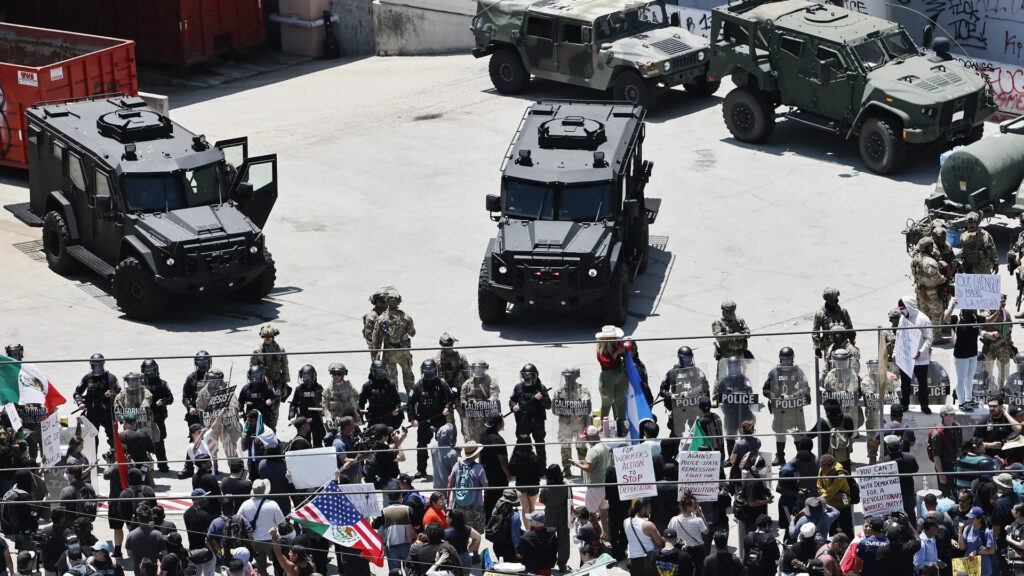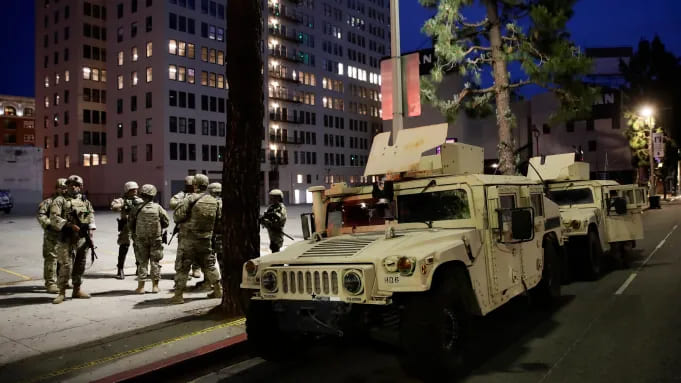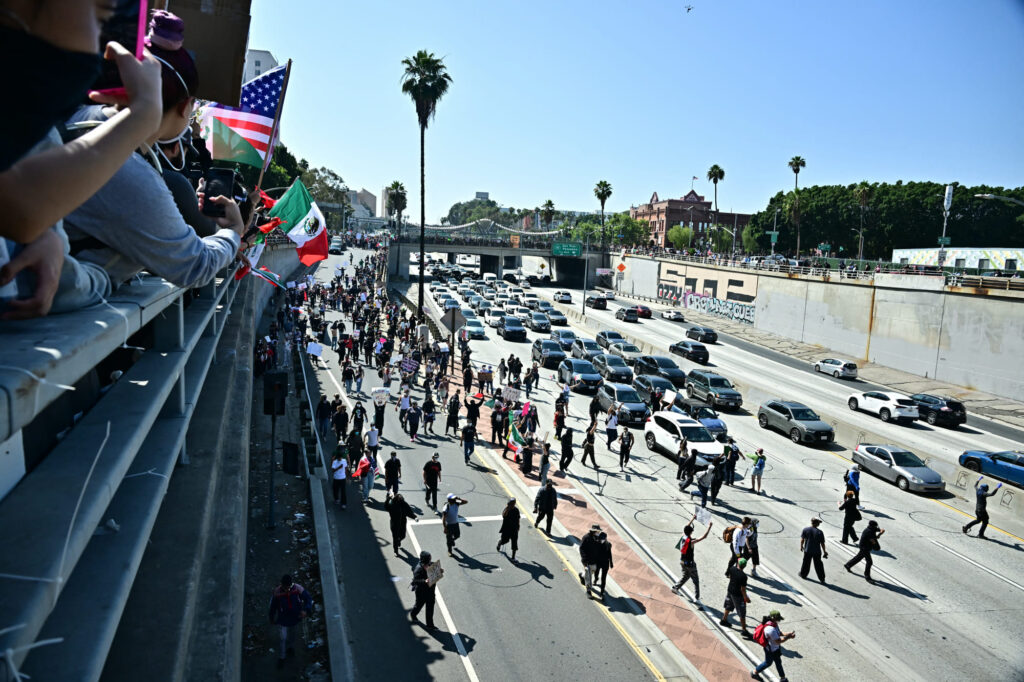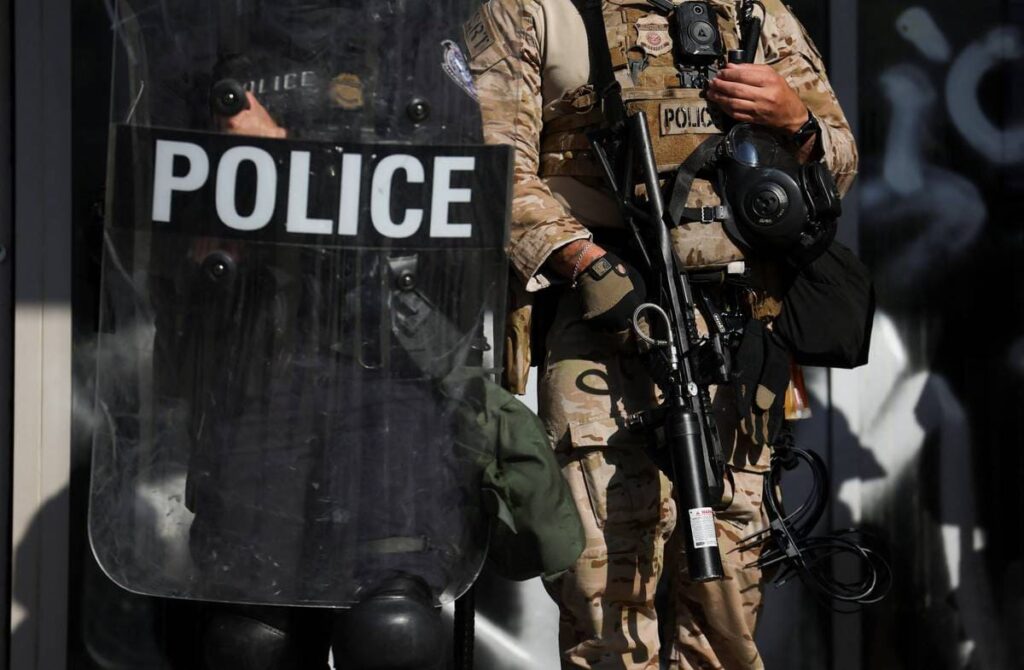In June 2025, Los Angeles curfew implemented a downtown from 8 p.m. to 6 a.m., covering a one-square-mile area amid growing unrest over federal immigration raids by ICE. What began as a targeted safety measure has evolved into a series of surprising changes in law, enforcement, and public behavior. This post explores 22 notable updates to the Los Angeles curfew, each with context, examples, and insights. Whether you’re a local, parent, policy advocate, or event planner, this guide offers clear information on what the curfew means and what to expect.
1. Curfew Boundaries Defined Precisely

Contrary to widespread assumptions, the curfew does not apply citywide. Instead, it covers a strictly defined one-square-mile area in downtown Los Angeles. Bordered by the I-5, I-110, and I-10 freeways, this area includes neighborhoods such as Skid Row, Little Tokyo, and parts of the Arts and Fashion districts. This clarification has proven crucial for residents and businesses, many of whom feared they were under unnecessary restrictions. The city’s official map helped alleviate confusion and ensured more effective compliance. Clear boundary definition has also made it easier for law enforcement to enforce rules without overstepping jurisdiction.
2. Curfew Hours: 8 p.m. – 6 a.m.
The Los Angeles curfew is active from 8 p.m. to 6 a.m. every night until further notice. These specific hours were chosen to prevent potential unrest and vandalism that often occur under cover of darkness. While the daytime remains open for regular activities, nighttime closures significantly affect nightlife, tourism, and late-night workers. For instance, Metro stations such as Union Station and Civic Center shut down earlier than usual. Residents and business owners have had to adjust operating hours, and many have implemented remote work or rescheduled deliveries to comply. The strict enforcement during these hours has led to increased police presence and vehicle checkpoints.
3. Exemptions: Who Is Still Allowed Outside
Despite the strict hours and location boundaries, there are specific exemptions to the curfew. Emergency personnel, credentialed media, people seeking medical care, and individuals experiencing homelessness are not subject to the curfew orders. Additionally, people traveling to or from work can remain outside during curfew hours with proper identification or employer documentation. These exemptions aim to balance public safety with essential needs and humanitarian concerns. For example, nurses working overnight shifts at nearby hospitals have been allowed safe passage. However, misuse of exemptions has also been reported, prompting authorities to require stricter proof of exemption status.
4. Increased Police Patrols and Checkpoints
With the enforcement of the curfew, there has been a noticeable increase in police patrols, especially around the curfew boundary areas. Mobile checkpoints have been established at key intersections, where vehicles are stopped and questioned during curfew hours. Foot patrols have also increased, with officers using body cameras to ensure compliance and accountability. This visible law enforcement presence is meant to deter unlawful gatherings and ensure that curfew rules are followed. However, it has also raised concerns about racial profiling and over-policing in marginalized communities. Civil rights organizations have started monitoring interactions closely to ensure that enforcement is fair and proportionate.
5. Impact on Public Transportation
The curfew has significantly affected public transportation schedules and operations. Key Metro stations within the curfew zone, including Little Tokyo/Arts District and Civic Center/Grand Park, are closed earlier than normal. Bus lines that travel through the curfew area are rerouted or suspended during curfew hours, leading to confusion and inconvenience for daily commuters. The Los Angeles County Metropolitan Transportation Authority (LACMTA) has published updated schedules, but limited access has forced many riders to seek alternative transportation. For shift workers and low-income residents who rely on public transit, this disruption poses a serious challenge.
6. Curfew Enforcement and Penalties
Violating the curfew can result in fines, citations, or even arrest depending on the circumstances. First-time offenders are typically given a warning, but repeated violations may lead to escalating penalties. Law enforcement agencies have emphasized discretion and proportionality, but they also stress that the rules must be taken seriously. Legal advocacy groups have provided resources for those who believe they were unfairly penalized, offering assistance with contesting citations in court. Understanding the exact enforcement protocol is essential for residents to avoid unnecessary legal trouble while still advocating for their rights.
7. Impact on Local Businesses and Nightlife
The curfew has deeply affected local businesses, especially bars, restaurants, and entertainment venues within the restricted zone. Many establishments have been forced to close earlier or cancel late-night events altogether. This has led to significant revenue losses for owners and employees who depend on evening crowds. Some venues have adapted by shifting to daytime or outdoor events, while others are petitioning city officials for exemptions during special occasions like concerts. Nightlife culture in downtown LA, once vibrant and growing, now faces uncertainty. Business owners argue that the curfew disproportionately harms small businesses and hope for a balanced solution that protects safety without stifling economic activity.
8. Changes to Concert and Event Curfews

The curfew has forced a rethinking of scheduling for concerts and public events in downtown Los Angeles. Many organizers have had to move start times earlier or shorten shows to comply with the 8 p.m. curfew. Outdoor venues like the Staples Center and Hollywood Bowl have worked closely with city officials to adjust plans. Some events have been postponed or relocated to areas outside the curfew boundaries. This has caused frustration among artists, promoters, and fans who are accustomed to later performances. However, safety concerns remain paramount, and organizers are seeking innovative ways to maintain vibrant cultural programming within these new restrictions.
9. Curfew and Fire Safety Concerns
In addition to crime prevention, part of the curfew’s justification relates to reducing fire hazards in high-risk areas, especially during dry summer months. The downtown zone has historically faced challenges with fires in homeless encampments and abandoned buildings. Limiting nighttime activity helps reduce accidental fires caused by cooking or smoking. Firefighters report fewer calls related to nighttime fires since curfew enforcement began. However, some advocates worry the restrictions may hinder outreach workers trying to provide fire safety education and resources to vulnerable populations. Balancing public safety with humanitarian needs continues to be a challenge.
10. Curfew Effects on Minors and Families
The curfew for minors is particularly strict, with additional guidelines and enforcement aimed at preventing underage youth from being outdoors after 8 p.m. Parents have expressed mixed feelings—some support the curfew as a tool to keep kids safe, while others worry about criminalizing typical teen behavior. Schools and community centers are coordinating to offer more evening activities and safe spaces. Law enforcement officials often work with social workers to engage with youth found violating curfew, prioritizing education over punishment. This holistic approach aims to reduce juvenile delinquency while supporting families affected by the new rules.
11. Technology Use in Curfew Enforcement
Los Angeles authorities have deployed advanced technology to monitor curfew compliance. Surveillance cameras with facial recognition capabilities have increased around curfew areas, raising privacy concerns. Additionally, drones equipped with infrared sensors patrol at night to detect gatherings and suspicious activity. Data analytics help predict curfew violations and allocate resources efficiently. While these tools improve enforcement accuracy, critics argue they may disproportionately target minority communities. Public forums and oversight committees have been established to address these concerns and promote transparency in technology use.
12. Community Response and Activism
The Los Angeles curfew has sparked significant community response, with both support and protest. Many residents in the affected areas appreciate the intent to increase safety and reduce nighttime crime, but others criticize the curfew as overly punitive and harmful to vulnerable populations, particularly the homeless. Activist groups have organized peaceful demonstrations demanding curfew reform or repeal, arguing that law enforcement resources would be better spent on housing and social services. Community forums hosted by the city aim to gather feedback and foster dialogue, but tensions remain high as stakeholders push for balanced solutions that respect civil liberties while addressing public safety.
13. Impact on Homeless Populations
Homeless individuals are among those most affected by the curfew. While the city exempts those experiencing homelessness from curfew orders, enforcement practices have sometimes led to displacement or forced relocations. Outreach workers report challenges in providing services during curfew hours due to increased police presence. Additionally, curfew restrictions complicate efforts to connect unhoused people with shelter and healthcare resources at night. Critics argue that without adequate housing solutions, the curfew simply pushes vulnerable populations into unsafe situations elsewhere. The city has promised to increase shelter capacity and social services to mitigate these effects.
14. Coordination with Federal Immigration Authorities
The curfew originated partly as a response to federal ICE immigration raids in downtown LA. City officials have coordinated with federal agencies to manage tensions and protect immigrant communities. However, concerns about racial profiling and civil rights violations persist. The curfew aims to prevent mass gatherings that could escalate during immigration enforcement actions, but it has also been criticized for creating a climate of fear among immigrant residents. Legal aid organizations have stepped up efforts to inform residents of their rights and provide support. The relationship between local curfew enforcement and federal immigration actions remains a complex and evolving issue.
15. Effects on Public Health and Safety
By limiting nighttime gatherings and outdoor activity, the curfew has impacted public health outcomes. Officials report reductions in violent crime and nighttime accidents within the restricted zone. However, some public health advocates caution that curfews can inadvertently isolate vulnerable individuals and reduce access to essential services after dark. Mental health outreach and addiction services have adapted by increasing daytime availability and telehealth options. The city is working to balance the curfew’s safety benefits with its unintended consequences, emphasizing the need for holistic approaches to community well-being.
16. Legal Challenges and Court Rulings

Since its implementation, the Los Angeles curfew has faced several legal challenges. Civil liberties groups argue that the curfew violates constitutional rights to free movement and assembly. Some court cases have resulted in temporary injunctions or clarifications on enforcement limits. The city has defended the curfew as a necessary public safety measure, citing evidence of reduced crime and public disorder. Legal experts suggest ongoing litigation may shape the future scope and duration of the curfew. Residents are encouraged to stay informed about their rights and seek legal counsel if they face curfew-related penalties.
17. Economic Impact on Downtown Real Estate
The curfew has also affected the downtown Los Angeles real estate market. Commercial properties, especially those reliant on foot traffic and nightlife, have seen a decrease in demand and rental prices. Residential landlords report higher vacancy rates as tenants relocate due to safety concerns and limited nighttime activities. On the other hand, some investors view this as a temporary dip, anticipating a rebound once the curfew lifts and revitalization efforts take hold. The city has introduced incentives for property improvements and community engagement programs aimed at stabilizing the real estate market during this challenging period.
18. Curfew’s Effect on Tourism
Tourism in downtown LA has experienced a noticeable decline since the curfew’s enforcement. Visitors accustomed to late-night dining, cultural events, and entertainment find options limited or unavailable after 8 p.m. Hotels within the curfew zone report fewer bookings and early check-outs. Tour operators have adjusted itineraries to daytime activities, and local businesses have launched campaigns to attract visitors earlier in the day. While the curfew impacts short-term tourism revenue, city officials are optimistic that improved safety conditions will encourage long-term growth and a more sustainable visitor experience.
19. Public Transportation Adjustments
In response to the curfew, public transportation authorities have made permanent schedule adjustments, especially for night buses and Metro rail lines. Service frequency has been reduced during curfew hours, and some routes have been temporarily suspended or rerouted. These changes have inconvenienced shift workers and late-night commuters, sparking calls for alternative transit options such as expanded ride-sharing subsidies and community shuttles. Authorities are exploring technology solutions to better communicate schedule changes and provide real-time updates to riders, aiming to minimize disruption while maintaining safety.
20. Increased Role of Community Organizations
Local nonprofits and community organizations have stepped up during the curfew period to provide support and advocacy. These groups offer legal aid, food assistance, and mental health services tailored to curfew-related challenges. Many have launched awareness campaigns informing residents about curfew rules, exemptions, and resources. Collaboration with law enforcement and city officials has improved outreach effectiveness, though some activists remain critical of enforcement practices. Community organizations continue to play a vital role in bridging gaps between authorities and residents, striving to ensure equitable treatment and social support.
21. Future of the Curfew: Possible Extensions or Lifting
City officials have stated that the curfew will remain in place “until it is safe to lift.” Discussions are ongoing about potential extensions, modifications, or gradual lifting depending on crime statistics and community feedback. Some advocate for replacing the curfew with targeted interventions focused on social services and community policing. Others argue for maintaining strict enforcement until conditions improve. The future of the Los Angeles curfew remains uncertain, but transparency and public engagement are emphasized as key factors in decision-making.
22. How Residents Can Stay Informed and Compliant

To navigate the curfew effectively, residents should regularly check official city websites, local news, and community bulletins for updates. Signing up for emergency alerts and notifications from the LAPD can provide timely information about curfew changes or enforcement actions. Understanding the exact boundaries, exemption criteria, and penalties helps avoid violations. Community meetings and online forums offer opportunities to ask questions and voice concerns. Staying informed and compliant benefits both individual safety and broader public well-being during this challenging period.